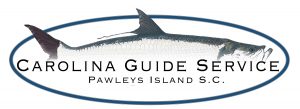Last Updated on November 12, 2025 by Eric Bonneman
When the first cold fronts settle over the marsh and the crowds thin, coastal South Carolina turns into a remarkably consistent fishery. Cooler water pulls gamefish into predictable places, the creeks clear up, and the flats can look like glass. That is the sweet spot for Carolina Guide Service’s year‑round inshore, nearshore, and fly‑fishing charters based around Pawleys Island, Georgetown/Winyah Bay, and the Lowcountry corridors between Charleston and Myrtle Beach. Trips are fully outfitted and family‑friendly, and each day is tailored to conditions, tides, and the angler’s experience level.
Why Winter Works
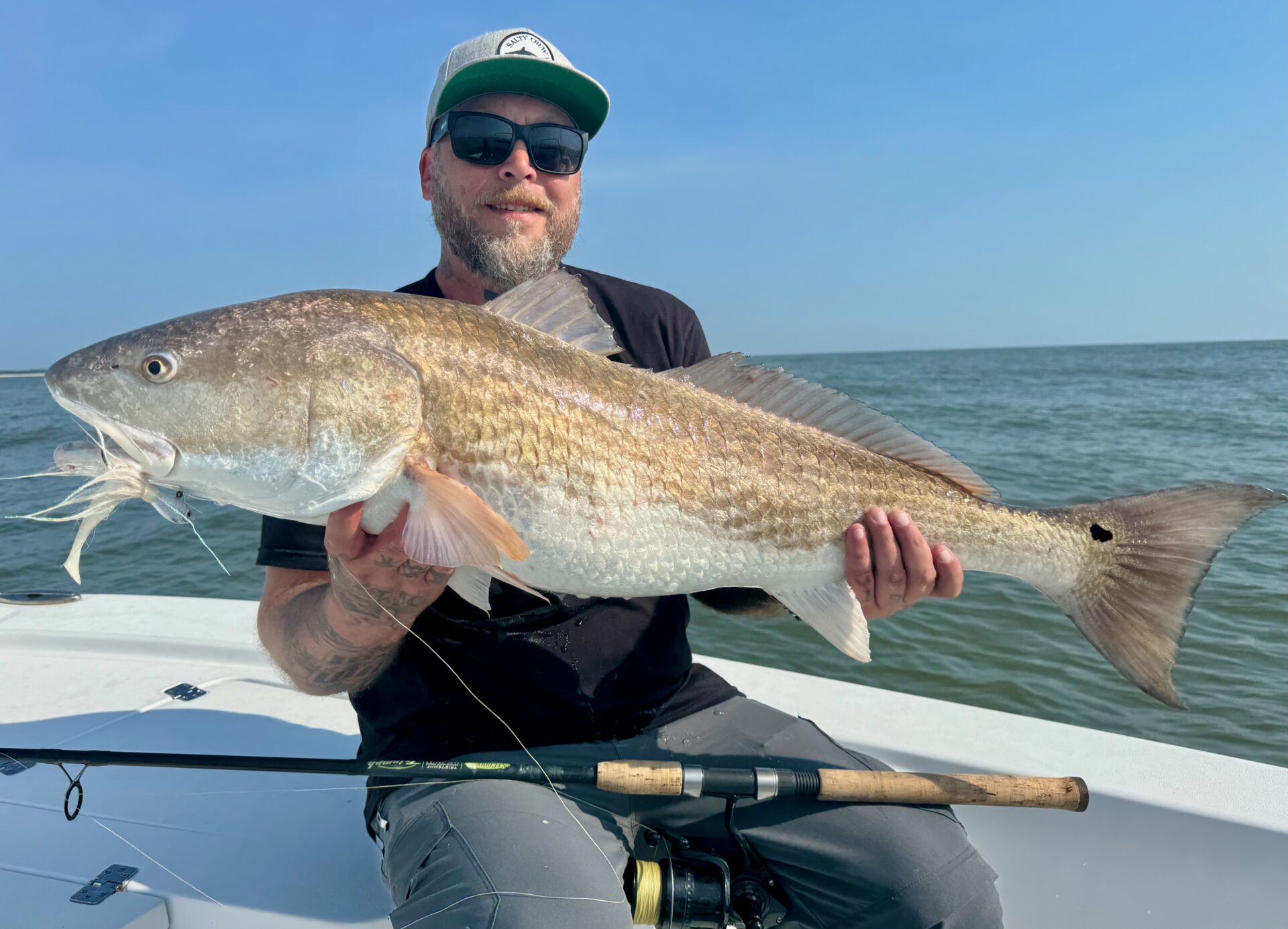
Winter changes the behavior of the fish in ways that favor anglers. Redfish gather into tight schools in very shallow water, both to feed and to feel safer from predators, which makes them easier to find and approach. The seasonal clarity turns sight‑fishing into a daily possibility, especially on sunny afternoons when the flats warm slightly. Speckled trout remain a steady option as well; during milder stretches they stage along current seams and inlet edges, and during real cold snaps they slide into deeper creek bends and holes where slower presentations shine. When the ocean settles down, short hops to nearshore structure add a different kind of action, with sheepshead and black drum around jetties, pilings, and reefs.
Where Your Winter Days Unfold

Georgetown and Winyah Bay are the winter engine for many trips. Four rivers feed this sprawling estuary, and in cooler weather the system often turns notably clear. On the right tide you can watch redfish push wakes over sun‑warmed flats before shifting to slightly deeper edges as water drops. Just to the north, Pawleys Island feels intimate in winter, with quiet creeks, clean water, and accessible trout and redfish patterns that are perfect for mixed‑experience groups and for fly anglers learning the cadence of sight‑casting. To the south, Bulls Bay and the Cape Romain refuge offer miles of shallow water where winter schools of redfish can be seen moving across flats at distance. On friendly sea days, departures from Georgetown Landing Marina put nearshore reefs and jetties within easy range.
Species and Seasonal Tactics

Redfish are the headliners all season. Winter schools are calm and visible, so the approach is deliberate: set up at distance, feed the lead edge of the school, and keep retrieves unhurried. Light‑tackle paddletails on jigheads do much of the work; on fly, eight‑ and nine‑weight rods with simple shrimp or mullet patterns are the go‑to tools. Speckled trout carry the middle of many winter days, with numbers often peaking from late fall into early winter and dependable action lingering during warm spells. Sweep soft plastics or suspending hard baits through deeper bends when temperatures dip. When seas allow, nearshore sheepshead deliver steady action on vertical structure from December through March, while juvenile black drum in the creeks provide reliable bites during the coldest stretches.
How the Charters Fit the Season
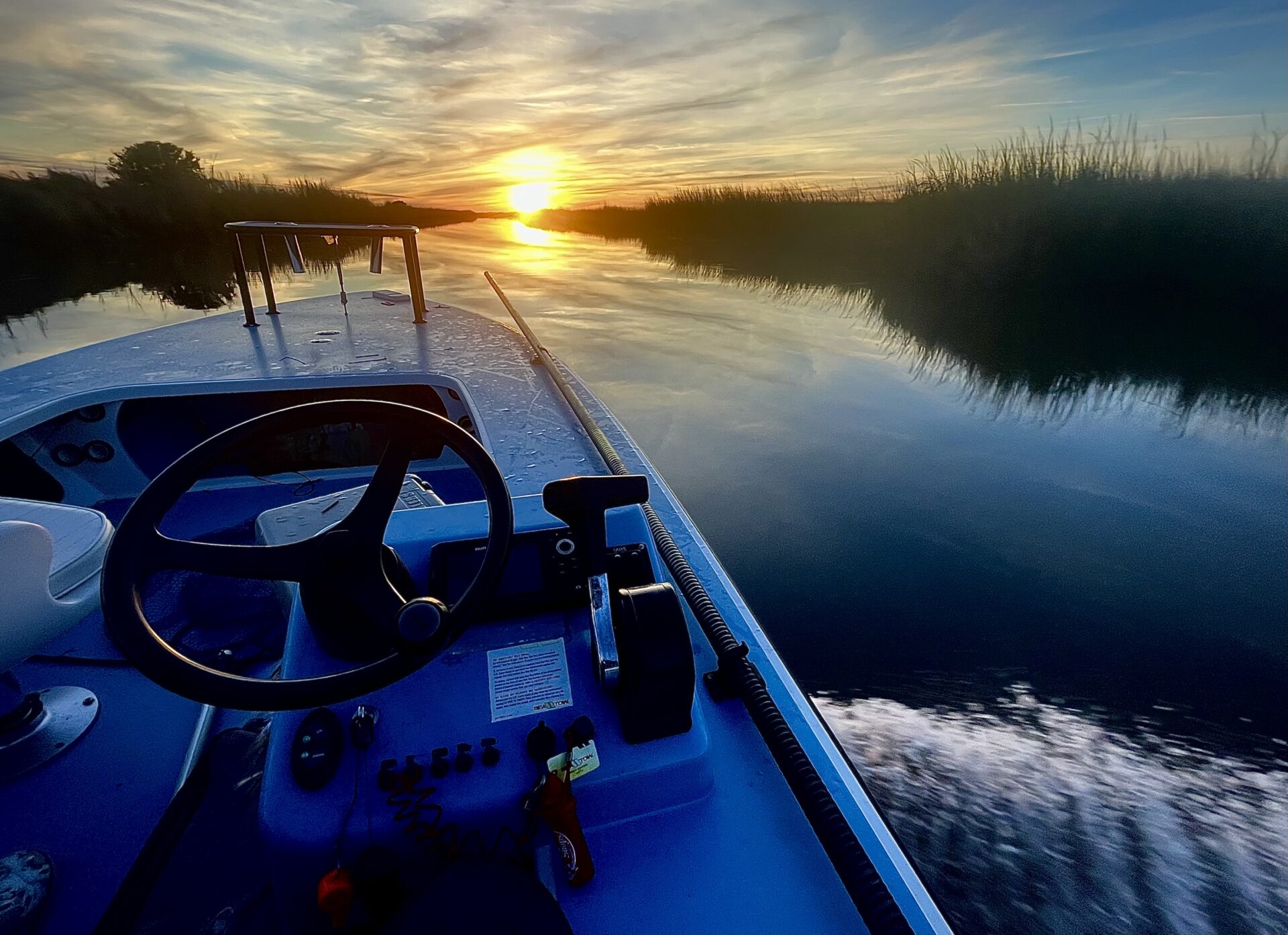
Most winter trips focus on protected inshore water to maximize fishing time and comfort. A typical charter runs five to six hours and is scheduled around the best tide and weather window of the day. The morning may start on a mid‑day low tide to sight‑fish redfish in shallow water, pivoting to deeper creek bends for trout and black drum while flats warm up. On calmer days the plan can include a short run outside to check jetties or nearshore reefs for sheepshead before returning to the marsh to finish on the flood. Every trip is customized around what is biting and how you like to fish, with an emphasis on keeping a rod bent without forcing patterns the conditions will not support.
Boats, Comfort, and Capacity
The fleet is matched to winter’s variety. A shallow‑draft flats skiff provides stealth on glassy creeks and tailing flats, a versatile bay boat balances inshore comfort with the ability to stretch to jetties and nearshore structure, and a 25‑foot center console offers a confident ride for bigger water and larger parties. Your captain selects the right platform for the forecast, then builds the plan around safety and productivity.
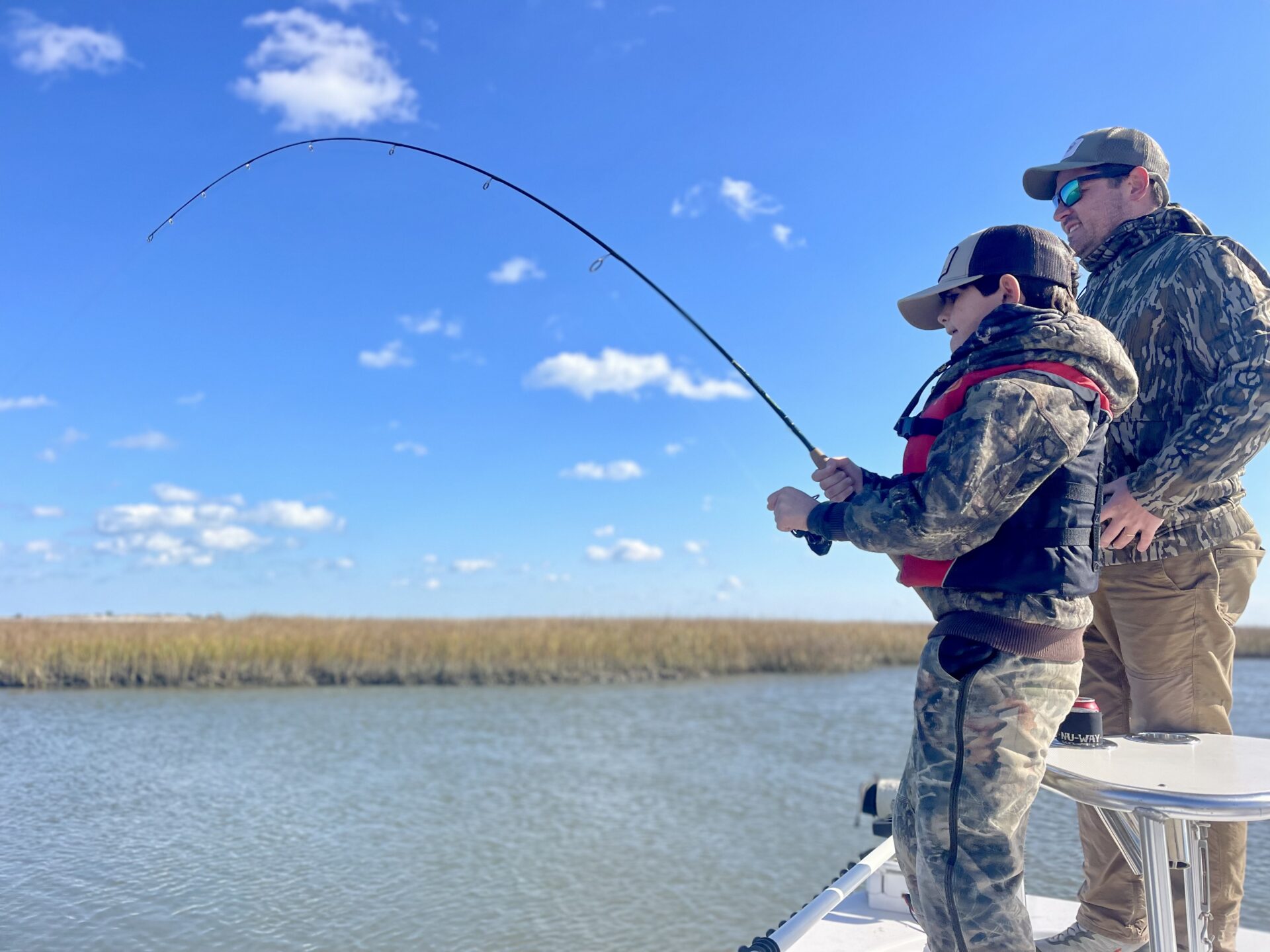
What’s Included and What to Bring
Trips include quality rods, bait, tackle, flies, required passenger fishing licenses, ice, and fish cleaning at the dock. Guests should dress in layers for cool air, wind, and occasional spray, wear polarized sunglasses and soft‑soled non‑marking shoes, and bring any preferred snacks and drinks. Nearshore charters remain weather‑dependent by design; the captain monitors conditions closely and may reschedule or cancel for safety. If anyone is prone to motion sickness, prepare ahead of time. Families and beginners are always welcome, and the pace is set to keep the day comfortable and enjoyable.
A Typical Winter Day on the Water
Many winter charters begin late morning to take advantage of sun‑warmed shallows. The captain may pole a flat until a school of redfish glows against the bottom, then slide quietly into position for precise casts. As light changes or the tide turns, the boat might ease toward deeper bends for trout and black drum, letting soft plastics or suspending plugs work slowly through the water column. If the forecast has held, a longer trip may finish at a nearshore reef where sheepshead gather on structure, providing a satisfying finale before a run back to the marsh.
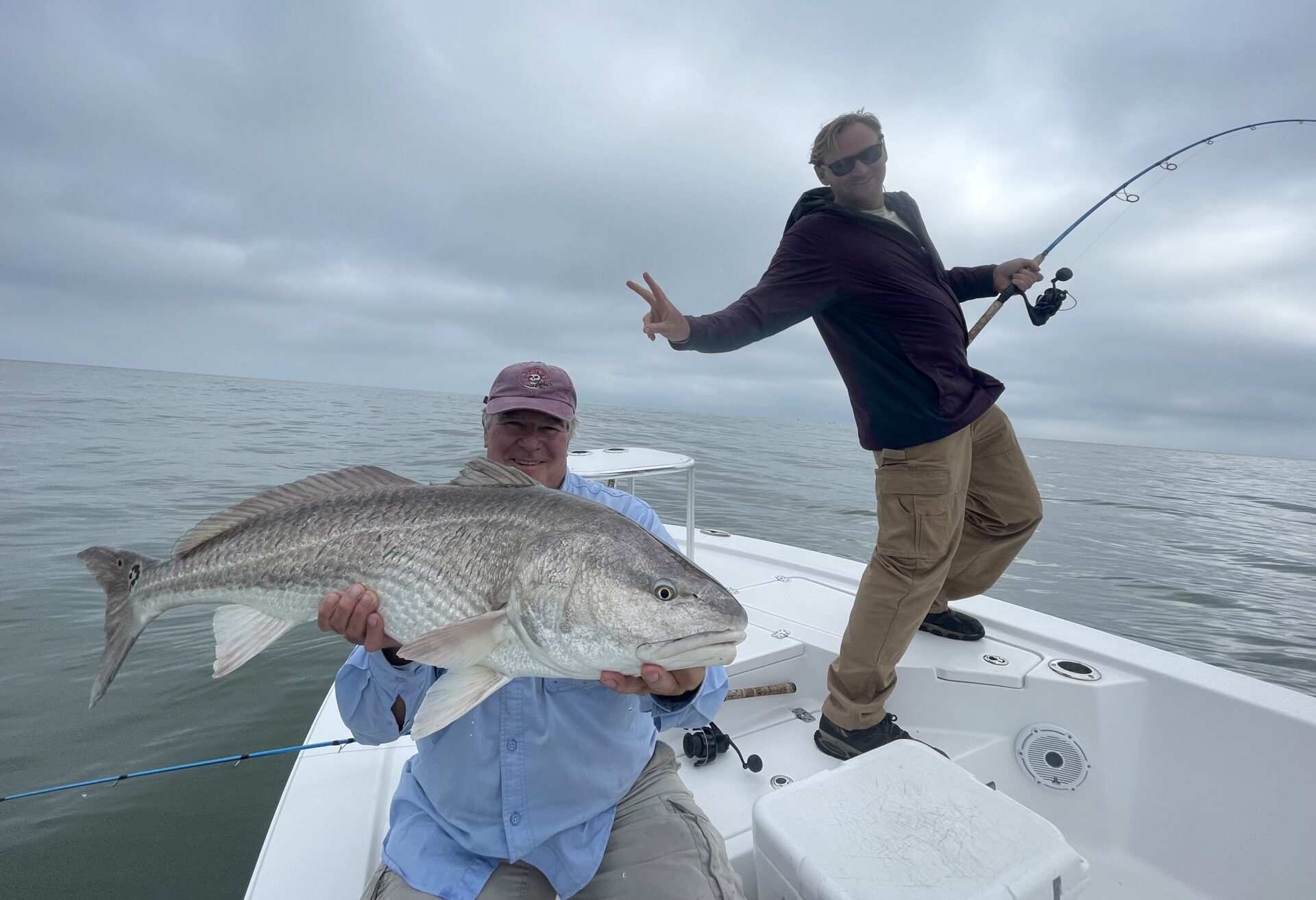
Responsible Harvest
Carolina Guide Service takes a conservation‑minded approach. Guests are welcome to keep a reasonable meal within regulations, and the crew will clean your catch at the dock. Redfish are frequently released, and larger speckled trout are often returned to support the fishery. It is a simple balance: keep a few for dinner, look after the resource, and help ensure tomorrow’s bite.
Booking and Next Steps
Winter is one of the most rewarding times to fish the South Carolina coast. The water clears, fish school tightly, and the pace is unhurried and personal. Carolina Guide Service operates year‑round with half‑ and full‑day options, small‑group capacity, and multiple boats available for larger parties. For current availability and pricing or to match a charter to your goals and experience level, reach out through the online booking option or call 843‑814‑7900. The team will pair the day, the boat, and the targets to the best tides and conditions of the season.
